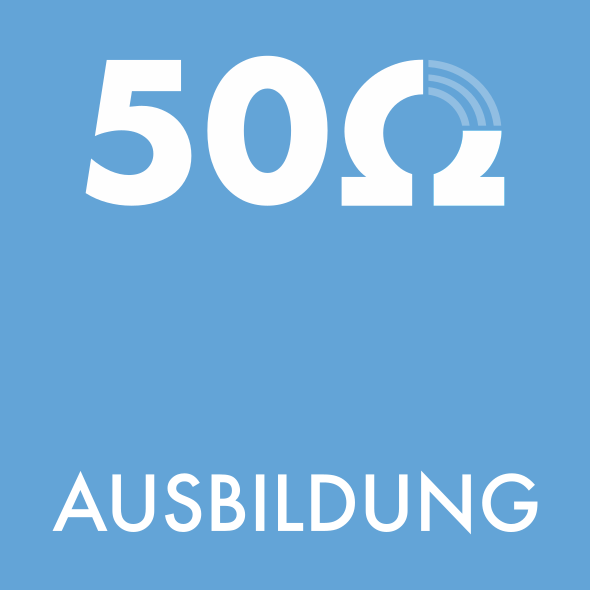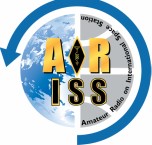January 14, 2025, Amateur Radio on the International Space Station (ARISS) has received schedule confirmation for an ARISS radio contact between an astronaut aboard the International Space Station (ISS) and students at the Vermont School located in Mexico City, Mexico. ARISS conducts 60-100 of these special amateur radio contacts each year between students around the globe and crew members with ham radio licenses aboard the ISS.
Vermont School teaches Junior and High School level studentsEnglish, French, and STEM (Science, Technology, Engineering, and Mathematics). Their goal is to offer holistic education based on action of UNESCO frameworks, promoting life transformation, peace, sustainable development, and equal opportunities for all. Their programs also emphasize critical thinking, self-sufficiency, and adaptability.
This will be a telebridge contact via Amateur Radio allowing students to ask their questions of astronaut Nick Hague, amateur radio call sign KG5TMV. The downlink frequency for this contact is 145.800 MHz and may be heard by listeners that are within the ISS-footprint that also encompasses the telebridge station.
The ARISS amateur radio ground station (telebridge station) for this contact is in Casale Monferrato, Italy. The amateur radio volunteer team at the ground station will use the call sign, IK1SLD to establish and maintain the ISS connection.
The ARISS radio contact is scheduled for January 17, 2025 at 11:00 am CST (Mexico City, MX) (17:00 UTC).
As time allows, students will ask these questions:
1. What steps did you take to become an astronaut and to travel to space?
2. What did you find challenging in your training?
3. What roles do astronauts perform on the ISS?
4. What kind of food do you typically eat in a day on the ISS?
5. What happens to the liquids in the body when there is no gravity?
6. How often do you get sick while in space, and how do you undergo medical check-ups?
7. Does time feel like it passes faster or slower when you are in space?
8. How does the silence of space compare to the quietest moments you experience on Earth?
9. How did your training help you achieve mission success on the ISS?
10. What is the most impressive thing you have ever seen in space?
11. Is it possible to observe Earth rotation on its axis or its orbit around the Sun from space?
12. What has been the greatest challenge of living and working in space, and how did you overcome it?
13. What research are you currently conducting in your lab?
14. What crops have you been able to grow on the ISS so far?
15. How are you preparing for deep space exploration missions of the future?
16. If you could go back in time five years, what would you change and why?
17. What is the next step you aim to take in your career?
ARISS-Europe News Bulletins are distributed by AMSAT Belgium. You can help support this effort with a donation.
https://www.amsat-on.be/donation-ariss-europe-news-bulletin/
Indien startet SpaDeX-Satelliten mit SSTV-Nutzlast
Indien hat laut AMSAT News Service Weekly Bulletins ANS-012 die SpaDeX-Mission gestartet, mit der das erste autonome Andockexperiment des Landes im Weltraum durchgeführt werden soll. Eine Trägerrakete (PSLV-C60) brachte am 30. Dezember 2024 zwei SpaDeX-Satelliten vom Satish Dhawan Space Centre in Sriharikota, Indien, in die Umlaufbahn. Die indische Weltraumforschungsorganisation (ISRO) sieht diese Mission als einen Schritt zur Unterstützung künftiger Mondmissionen und zum Aufbau einer Raumstation. Das Space Docking Experiment (SpaDeX) besteht aus zwei 220 kg schweren Satelliten, die Rendezvous- und Andockverfahren testen sollen. Im Rahmen der Mission werden die Energieübertragung zwischen den angedockten Satelliten und die Steuerungsfähigkeiten der beiden Raumfahrzeuge geprüft. Neben dem Andockexperiment umfasst die Mission auch das POEM-4 (PS4-Orbital Experimental Module), ein separater Satellit, der 24 Nutzlasten trägt.
Eine dieser Nutzlasten ist BGS ARPIT, ein Amateurfunkprojekt, das vom SJC-Institut für Technologie, dem Upagrah Amateur Radio Club (VU2URC) und der AMSAT-India entwickelt wurde, um Ausbildungsaktivitäten zu unterstützen und das 75. Jahr der Unabhängigkeit Indiens zu feiern. BGS ARPIT überträgt gespeicherte Bilder über Slow Scan Television (SSTV), Audionachrichten und Telemetriedaten auf 145,870 MHz und fungiert außerdem im Wechsel als APRS-Digipeater auf 145,825 MHz. Die Frequenzen wurden von der IARU koordiniert. BGS ARPIT hat am 10. Januar seine erste SSTV-Übertragung absolviert, weitere Aktivitäten sind zu erwarten.
DM4TG auf Funkamateur.de
ARISS contact is scheduled with students at University of Presov, Presov, Slovakia
January 23, 2025, Amateur Radio on the International Space Station (ARISS) has received schedule confirmation for an ARISS radio contact between an astronaut aboard the International Space Station (ISS) and students at the University of Presov located in Presov, Slovakia. ARISS conducts 60-100 of these special amateur radio contacts each year between students around the globe and crew members with ham radio licenses aboard the ISS.
The University of Presov (UNIPO) is a public, self-governing institution engaged in creative scientific, educational, artistic, and cultural activities. UNIPO offers programs that include the arts, humanities, theology, management, education, healthcare, and the natural sciences, which includes the Department of Physics, Mathematics, and Technologies. The University will host this ARISS contact allowing their own university students to ask questions as well as scouts and students from four local elementary and high schools. The ARISS contact is facilitated in collaboration with two amateur radio clubs: OM3RLL and OM3VSZ. Radio operators will use call sign OM25ISS, that was released in occasion of the 25th anniversary of the Stefanik mission and will be dedicated to this educational contact with the ISS crew.
This will be a direct contact via Amateur Radio allowing students to ask their questions of astronaut Sunita Williams, amateur radio call sign KD5PLB. The downlink frequency for this contact is 145.800 MHz and may be heard by listeners that are within the ISS-footprint that also encompasses the relay ground station.
The amateur radio ground station for this contact is in Presov, Slovakia. Amateur radio operators using call sign OM25ISS, will operate the ground station to establish and maintain the ISS connection.
The ARISS radio contact is scheduled for January 25, 2025 at 4:21 pm CET (Slovakia) (15:21 UTC).
View contact via live stream at https://www.youtube.com/@om25iss
As time allows, students will ask these questions:
1. What's the most unexpected thing you've learned about yourself in space?
2. How do you cope with boredom on long missions?
3. If you could bring one item from Earth on the ISS, what would it be?
4. Is it true that Astronauts on the ISS need to know how to speak Russian, how to swim, and how to make origami?
5. How do you perceive gravity in space?
6. What's your favorite way to spend free time on the ISS?
7. What's the most surprising part of living in close quarters with the same people for months?
8. If you are in a space suit, and have an itch, how do you scratch yourself?
9. How do you measure weight in space?
10. What's the most challenging part of communicating with Earth while in orbit?
11. If you could send a message to everyone on Earth, what would it be?
12. How do you prepare for emergencies, like a fire or air leak, on the ISS?
13. What's the most fascinating thing you've learned about the universe in space?
14. How do you keep track of time with 16 sunrises and sunsets every day?
15. What's the most fun or creative thing you've done using microgravity?
ARISS contact is scheduled with students at Public Primary School, La Laupie, France
February 5, 2025, Amateur Radio on the International Space Station (ARISS) has received schedule confirmation for an ARISS radio contact between an astronaut aboard the International Space Station (ISS) and students at the La Laupie School located in La Laupie, France. ARISS conducts 60-100 of these special amateur radio contacts each year between students around the globe and crew members with ham radio licenses aboard the ISS.
La Laupie School is in the Drome department, in the South of France, 10 kilometers from Montelimar, with 72 pupils, ages 3 to 10 years. With help from an Amateur Radio Association, students have participated in different projects, which included, among others, launching of a stratospheric balloon in 2017 and direct satellite communication with scientists from the Crozet Archipelago, on the Antarctic Continent, in February 2023.
This will be a direct contact via Amateur Radio allowing students to ask their questions of astronaut Don Pettit, amateur radio call sign KD5MDT. The downlink frequency for this contact is 145.800 MHz and may be heard by listeners that are within the ISS-footprint that also encompasses the relay ground station.
The amateur radio ground station for this contact is in La Laupie, France. Amateur radio operators using call sign F5KLF, will operate the ground station to establish and maintain the ISS connection.
The ARISS radio contact is scheduled for February 7, 2025 at 15:27 CET (France), (14:27 UTC).
As time allows, students will ask these questions:
1. Do you work during the day and sleep at night?
2. What do you do when you are sick?
3. Do you have desks in the ISS?
4. How do you get supplies on the ISS?
5. How do you wash your laundry?
6. Is your spacesuit heavy?
7. What do you eat in the ISS?
8. Do you often go outside of the ISS?
9. Are the other astronauts considered your friends?
10. What is the temperature on the ISS?
11. How does it feel to live without gravity?
12. What sensations do you feel when you could walk again on Earth?
13. On what are you working at the moment? What kind of research?
14. What kind of sensations do you feel when you lift-off? When you land?
15. Do you have electricity on the ISS?
16. Do you have a cuddly toy or blanket to sleep with?
17. Do you have any hobbies? Games, books, television or music?
18. Does the food taste good on the ISS?
19. Is it difficult to sleep in space?


